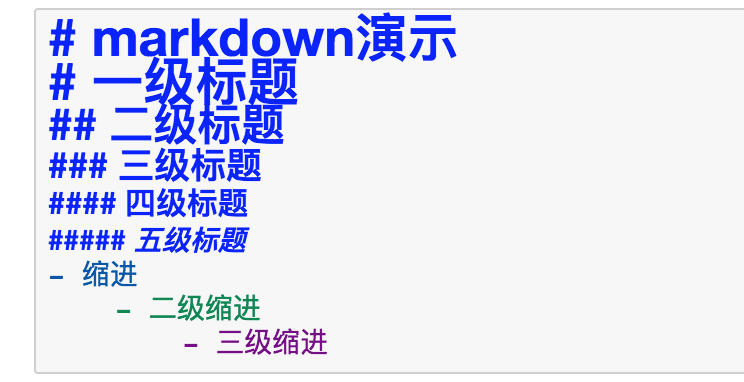Js遍历数组总结
- 2020 年 3 月 28 日
- 筆記
Js遍历数组总结
遍历数组的主要方法为for、forEach、map、for in、for of
for
var arr = [1,2,3,4,5]; var n = arr.length; // 直接取长度,避免每次循环都读取arr对象的属性 for(let i=0; i<n; ++i ){ console.log(arr[i]); } // 1 2 3 4 5 //循环体也可以这么写 for(let i=0, len=arr.length; i<len; ++i ){ console.log(arr[i]); } // 1 2 3 4 5 forEach
Array.prototype.forEach()
arr.forEach(callback(currentValue [, index [, array]])[, thisArg])
callback 为数组中每个元素执行的函数,该函数接收一至三个参数
currentValue 数组中正在处理的当前元素
index 可选 数组中正在处理的当前元素的索引
array 可选 正在操作的数组
thisArg 可选 当执行回调函数callback时,用作this的值
注意如果使用箭头函数表达式来传入callback,thisArg参数会被忽略,因为箭头函数在词法上绑定了this值
注意如果想在遍历执行完之前结束遍历,那么forEach与map并不是好的选择
var arr = [1,2,3,4,5]; var obj = { a: 1 }; // 定义obj为了演示this用 arr.forEach( function(currentValue,index,array) { console.log("当前值",currentValue); console.log("当前值索引",index); console.log("当前处理数组",array); console.log("当前this指向",this); console.log("结束一次回调,无需返回值"); console.log(""); },obj); /* 当前值 1 当前值索引 0 当前处理数组 (5)[1, 2, 3, 4, 5] 当前this指向 {a: 1} 结束一次回调,无需返回值 当前值 2 当前值索引 1 当前处理数组 (5)[1, 2, 3, 4, 5] 当前this指向 {a: 1} 结束一次回调,无需返回值 ........... */ // forEach使用频率较高,但是性能不如普通for循环 map
Array.prototype.map()
arr.map(callback(currentValue [, index [, array]])[, thisArg])
callback 为数组中每个元素执行的函数,该函数接收一至三个参数
currentValue 数组中正在处理的当前元素
index 可选 数组中正在处理的当前元素的索引
array 可选 正在操作的数组
thisArg 可选 当执行回调函数callback时,用作this的值
注意如果使用箭头函数表达式来传入callback,thisArg参数会被忽略,因为箭头函数在词法上绑定了this值
注意map回调函数return的结果组成了新数组的每一个元素,原数组被映射成对应新数组
var arr = [1,2,3,4,5]; var obj = { a: 1 }; // 定义obj为了演示this用 var newArr = arr.map( function(currentValue,index,array) { console.log("当前值",currentValue); console.log("当前值索引",index); console.log("当前处理数组",array); console.log("当前this指向",this); console.log(""); return currentValue + 10; // 将arr值加10返回成为新数组 },obj); console.log(newArr); // [11, 12, 13, 14, 15] /* 当前值 1 当前值索引 0 当前处理数组 (5)[1, 2, 3, 4, 5] 当前this指向 {a: 1} 当前值 2 当前值索引 1 当前处理数组 (5)[1, 2, 3, 4, 5] 当前this指向 {a: 1} ........... */ //这种方式也是用的比较广泛的,但性能不如forEach for in
// 此方法遍历数组效率非常低,主要是用来循环遍历对象的属性 // 遍历数组 var arr = [1,2,3,4,5]; for(item in arr){ console.log(arr[item]); } // 1 2 3 4 5 // 数组遍历时需注意,数组索引只是具有整数名称的枚举属性,并且与通用对象属性相同。 // 不能保证for ... in将以任何特定的顺序返回索引。 // for ... in循环语句将返回所有可枚举属性,包括非整数类型的名称和继承的那些。 // 因为迭代的顺序是依赖于执行环境的,所以数组遍历不一定按次序访问元素。 // 因此当迭代访问顺序很重要的数组时,最好用整数索引去进行for循环 // 遍历对象 var obj = {a:1,b:2}; for(item in obj){ console.log(obj[item]); } // 1 2 // for ... in是为遍历对象属性而构建的 for of
for of为ES6新增,其在可迭代对象包括Array,Map,Set,String``TypedArray,arguments对象等等上创建一个迭代循环,调用自定义迭代钩子,并为每个不同属性的值执行语句。
var arr = [1,2,3,4,5]; for (let value of arr) { console.log(value); } // 1 2 3 4 5 operate
Array.prototype还提供了对于数组的判断与过滤操作,every()、some()、find()、findIndex()、filter()
var arr = [1,2,3,4,5]; // arr.everymap(callback(currentValue [, index [, array]])[, thisArg]) // every() 方法测试一个数组内的所有元素是否都能通过某个指定函数的测试。它返回一个布尔值。 console.log(arr.every( (currentValue ) => { return currentValue > 1; })) // false console.log(arr.every( (currentValue ) => { return currentValue > 0; })) // true // arr.some(callback(element[, index[, array]])[, thisArg]) // some() 方法测试数组中是不是至少有1个元素通过了被提供的函数测试。它返回的是一个Boolean类型的值。 console.log(arr.some( (currentValue ) => { return currentValue > 1; })) // true console.log(arr.some( (currentValue ) => { return currentValue > 6; })) // false // arr.find(callback(element[, index[, array]])[, thisArg]) // find() 方法返回数组中满足提供的测试函数的第一个元素的值。否则返回 undefined。 console.log(arr.find( (currentValue ) => { return currentValue > 2; })) // 3 console.log(arr.find( (currentValue ) => { return currentValue > 6; })) // undefined // arr.findIndex(callback(element[, index[, array]])[, thisArg]) // findIndex()方法返回数组中满足提供的测试函数的第一个元素的索引,否则返回-1。 console.log(arr.findIndex( (currentValue ) => { return currentValue > 2; })) // 2 console.log(arr.findIndex( (currentValue ) => { return currentValue > 6; })) // -1 // arr.filter(callback(element[, index[, array]])[, thisArg]) // filter() 方法创建一个新数组, 其包含通过所提供函数实现的测试的所有元素。 console.log(arr.filter( (currentValue ) => { return currentValue > 2; })) // [3, 4, 5] 参考
https://blog.csdn.net/function__/article/details/79555301 https://developer.mozilla.org/zh-CN/docs/Web/JavaScript/Reference/Global_Objects/Array 
